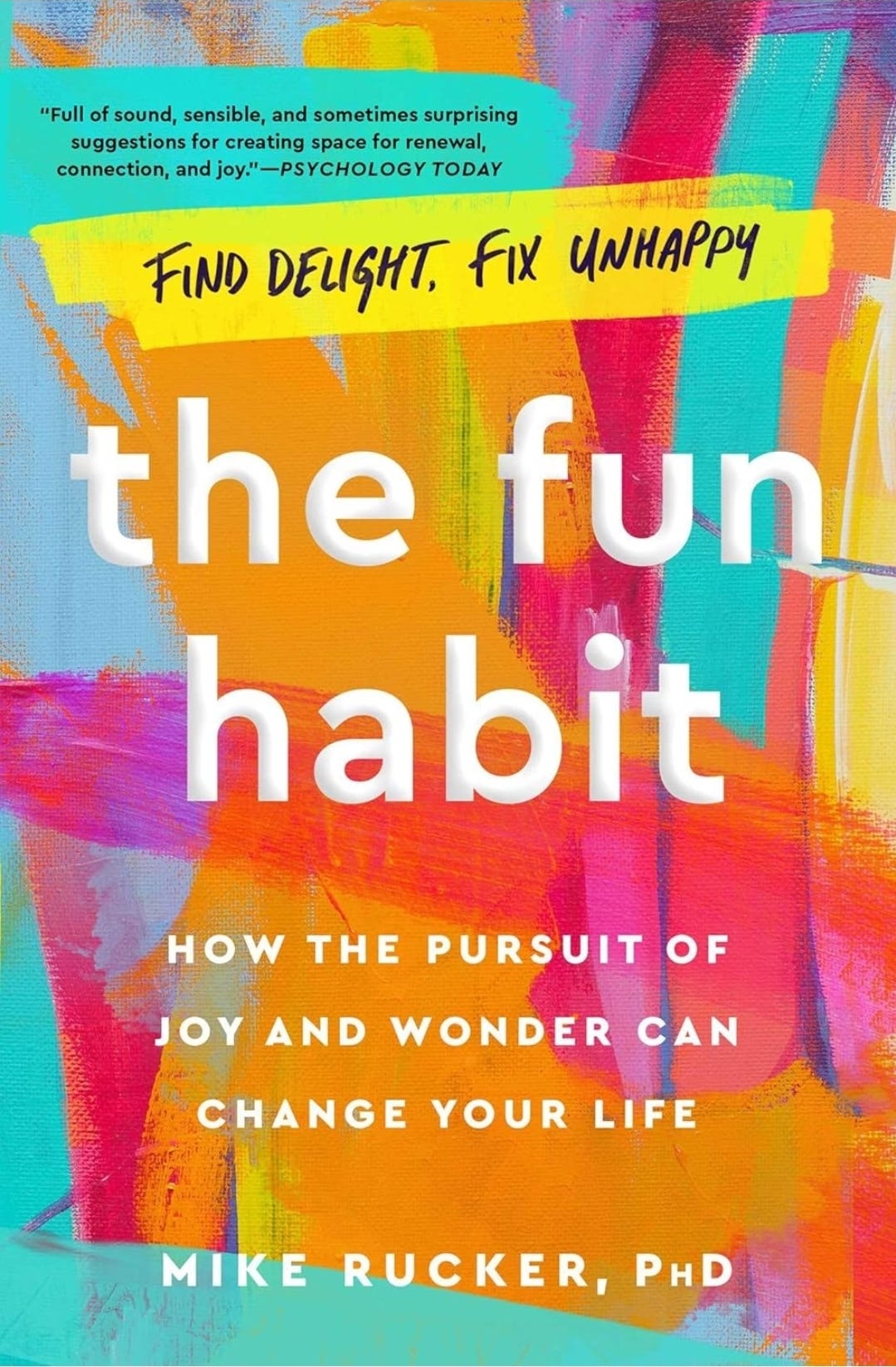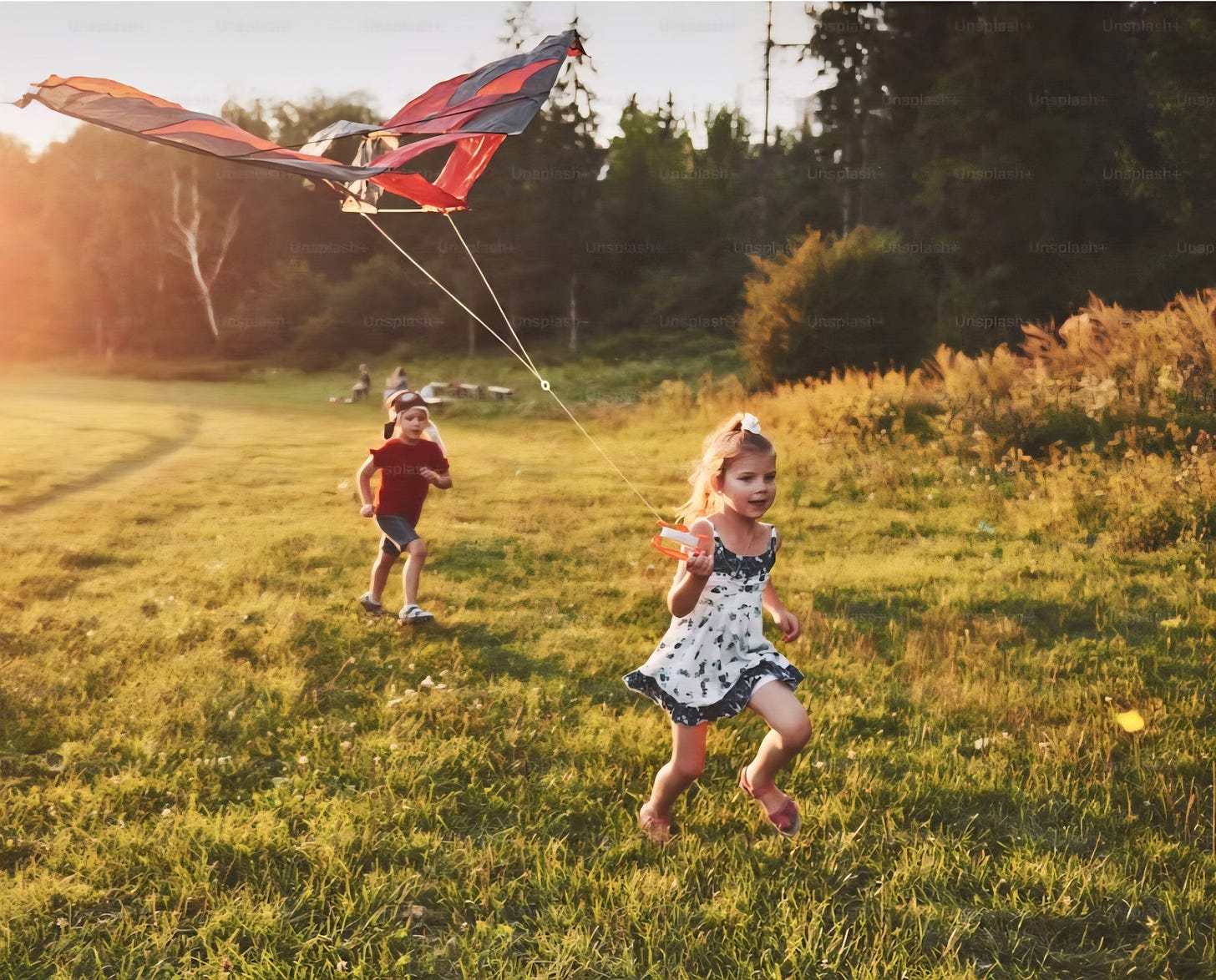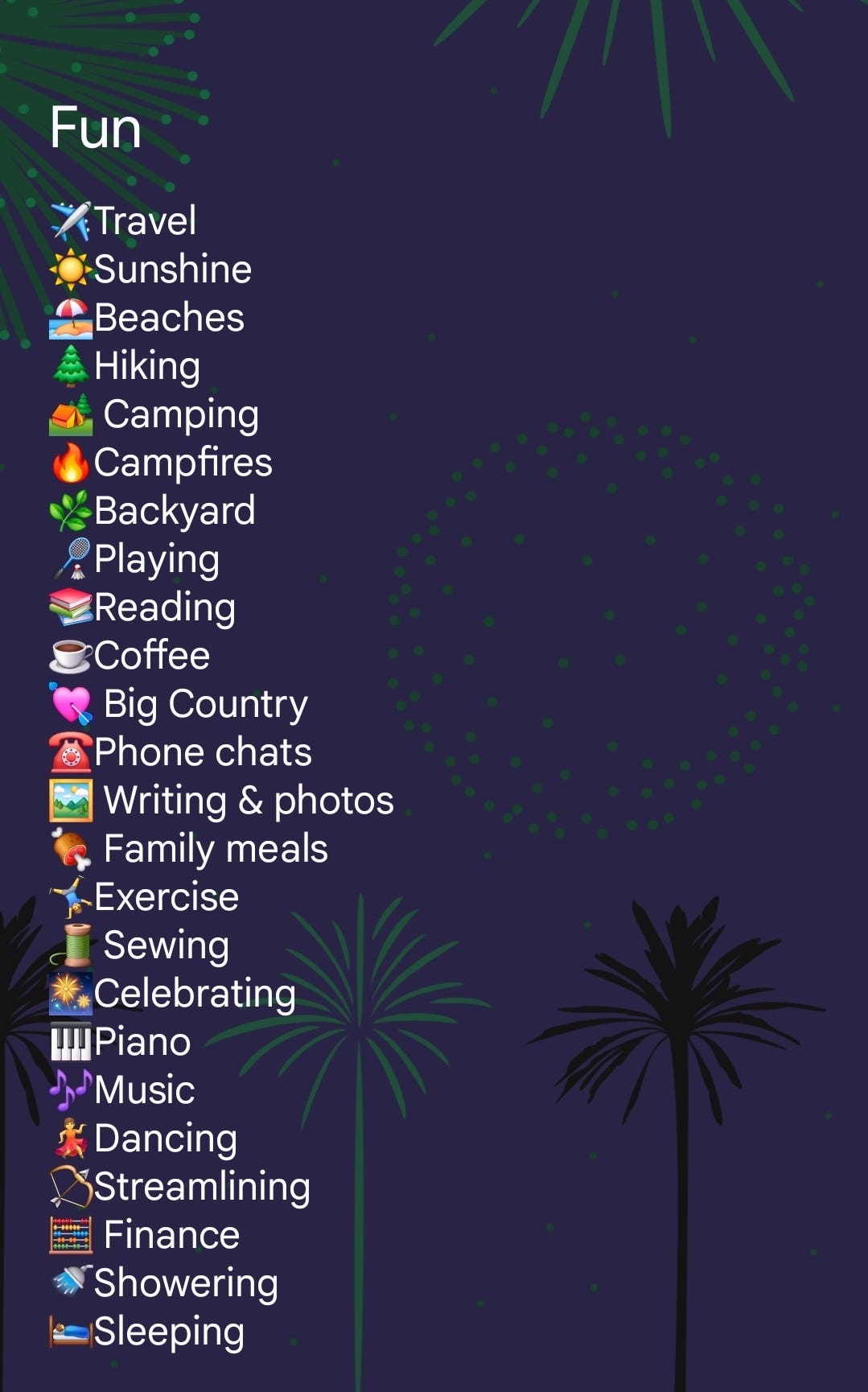Books to Love: The Fun Habit
“Fun is one of the most important—and underrated—ingredients in any successful venture.”
Richard Branson
The Fun Habit, by Mike Rucker, shows the many ways in which fun, learning, novelty, and giving back all lead to greater satisfaction in life and even the perception that life is longer and richer.
Some takeaways . . .
What is Fun?
If happiness is a state of mind, fun is an action—a choice available to all of us in the here and now. Having fun is a natural outpouring of curiosity about life.
“Curiosity is a form of self-expansion where your resources, your philosophies, your wisdom, your perspectives . . . grow.”
Dr. Todd B. Kashdan
The PLAY Model
A simple four quadrant chart, the PLAY Model helps us assess how challenging and fun different activities in our life are and what may be out of balance. It looks like this:
Pleasing activities are fun and easy. For me, this would be holding the baby during her naps while I read, cooking while listening to an interesting podcast, eating meals with family, having coffee with Big Country in the mornings, read alouds in the evenings, and talking with close friends on the phone while at the beach.
Living activities are fun, but more challenging: hiking, camping, exercising, traveling, working on a sewing project, writing, and editing are ones that come to mind.
Agonizing activities are, unsurprisingly, challenging and not fun. Filing taxes, fulfilling unwanted obligations, cooking under pressure, and dealing with bills, emails, and online shopping, for me.
Yielding activities are temptingly easy, yet ultimately low in fun. The author cites mindless online scrolling, most social media and TV consumption, binge eating, drinking, worrying, and in general wasting time in a restless, unfulfilling way.
Savoring Life
What can we do if life feels lacking in joyful fun or stimulating challenge? The SAVOR acronym gives us ideas:
Story editing: initiating and being open to fun times within the context of your life.
Activity bundling: combining uncomplicated tasks with pleasurable activities, like playing music while cleaning house.
Variable hedonics: breaking up enjoyable experiences so they don't become routine. Introducing surprise, wonder, spontaneity.
Options: opening up to new opportunities, adventures to pursue, geoarbitrage.
Reminiscing: giving thanks to God, journaling, looking at photos, scrapbooking, celebrating what has gone right, and appreciating others, simple pleasures, and abundance.
What's Fun is Individual
In a culture that praises extroversion, we often think of only high octane activities as fun. But peaceful activities can be fun as well. When prompted to think of a handful of fun ideas I could implement in my life now, I thought of:
Traveling more. Allocating more of our regular budget toward priority trips we want to take with the kids.
Learning dance, as a mixup to my workouts.
Going on walking dates with Big Country.
Playing more with the kids: badminton, frisbee, board games.
Sewing a few beautiful kimonos to wear and enjoy.
Relaxing in our hammock.
Life is Full of Blessings
While jotting down fun things I like to do, I realized how full and rich life is already is. Naturally, I used fun emojis:
Escapes
Have you ever traveled to a new place and somehow the vibrant memories packed into those precious few days or weeks seem to expand and make it seem like you were gone much longer? This is the magic of “Adventure Time.”
The good kind of escapism truly expands your horizons and brings you out of yourself and your narrow needs and desires.
Escapes are refreshing, helping us come up with out-of-the-box alternative ideas and solutions. They can bring renewal, healing, agency, and strength to our regular lives.
While on vacation, it's good to completely disconnect from work and social media. Slow down, take some solo time if traveling with friends or family, and balance planning with spontaneity.
Mysterious, Transcendent Fun
Psychologist Abraham Maslow developed his famous hierarchy of needs in 1943, theorizing that the most fundamental human needs must be satisfied first in order that higher needs be then pursued and met. Often depicted as a pyramid, the levels from base to peak are:
Physiological: air, water, food, heat, clothes, shelter, sleep, reproduction.
Safety: health, job, and personal, emotional, and financial security.
Love and Belonging: comfort, connection, acceptance, respect, trust, affection, and friendship.
Esteem: self respect and respect from others based on real achievement, capacity, and competence.
Cognitive: comprehension, curiosity, creativity, foresight, meaning.
Aesthetic: beauty, connection to nature.
Self-actualization: becoming all one can be, pursuing excellence and mastery; marriage, parenting.
Transcendence: spirituality, going beyond oneself.
Using this framework, where does fun come into play? How valuable is it to smile and laugh, including at ourselves?
The author suggests that if happiness is a state of being, fun is the act of doing, of relating to the world around us with joy. It's a relationship involving others, nature, sports, music, art, or something else outside ourselves. In that way, fun is mysteriously transcendent, a truly peak experience.
“Fun allows us to cope with life's pain, and sometimes even transcend it, by more fully experiencing life's gifts.”
Micheal Rucker
Friends
Fun and friends go together like bacon and eggs. Not only does our enjoyment increase when others are enjoying themselves, but our relationships deepen with the people we have fun with. And simply calling up an old friend is a wonderful way to show someone you care and to have fun catching up, too.
The Happiest Parents
A wealth of research shows that the happiest parents are the ones who prioritize their children and allocate emotion, attention, and finances to their wellbeing before their own. They truly have fun with, rather than in spite of their children.
Hard Fun
One of life's adventures is to pursue a big, audacious goal while having lots of fun along the way. Intrinsically motivated goals, the ones that most clearly reflect our passions, values, love of learning, and sources of enjoyment, are the most powerful.
Who Doesn't Love a Good Story?
Overly academic at times, the strength of this book was its engaging anecdotes. The story of a man accidentally sent a bachelor party invitation on the other side of the country by a stranger . . . and who ends up going anyway and having a blast.
The story of how the author completed a grueling Ironman in New Zealand with a boom box on his bike, wearing board shorts and a Hawaiian lei.
The story of dental hygienist Judy who has for years dressed up in fanciful glasses, wigs, and costumes to delight and disarm her patients before treatment.
The story of businessman Ric Elias, a survivor of the “Miracle on the Hudson” airplane crash, who contrasts his former habit of forgoing meaningful time with loved ones and instead “collecting bad wines” to his newfound urgency to accept opportunities for joy:
“If the wine is ready and the person is there, I'm opening it. I no longer want to postpone anything in life. And that urgency, that purpose, has really changed my life.”
Overall, The Fun Habit explores new facets of joy and wonder and how they give hope, depth, and new meaning to life.
“A joyful heart is good medicine”
Proverbs 17:22a
Until next time, happy reading! 📚
Liberty








